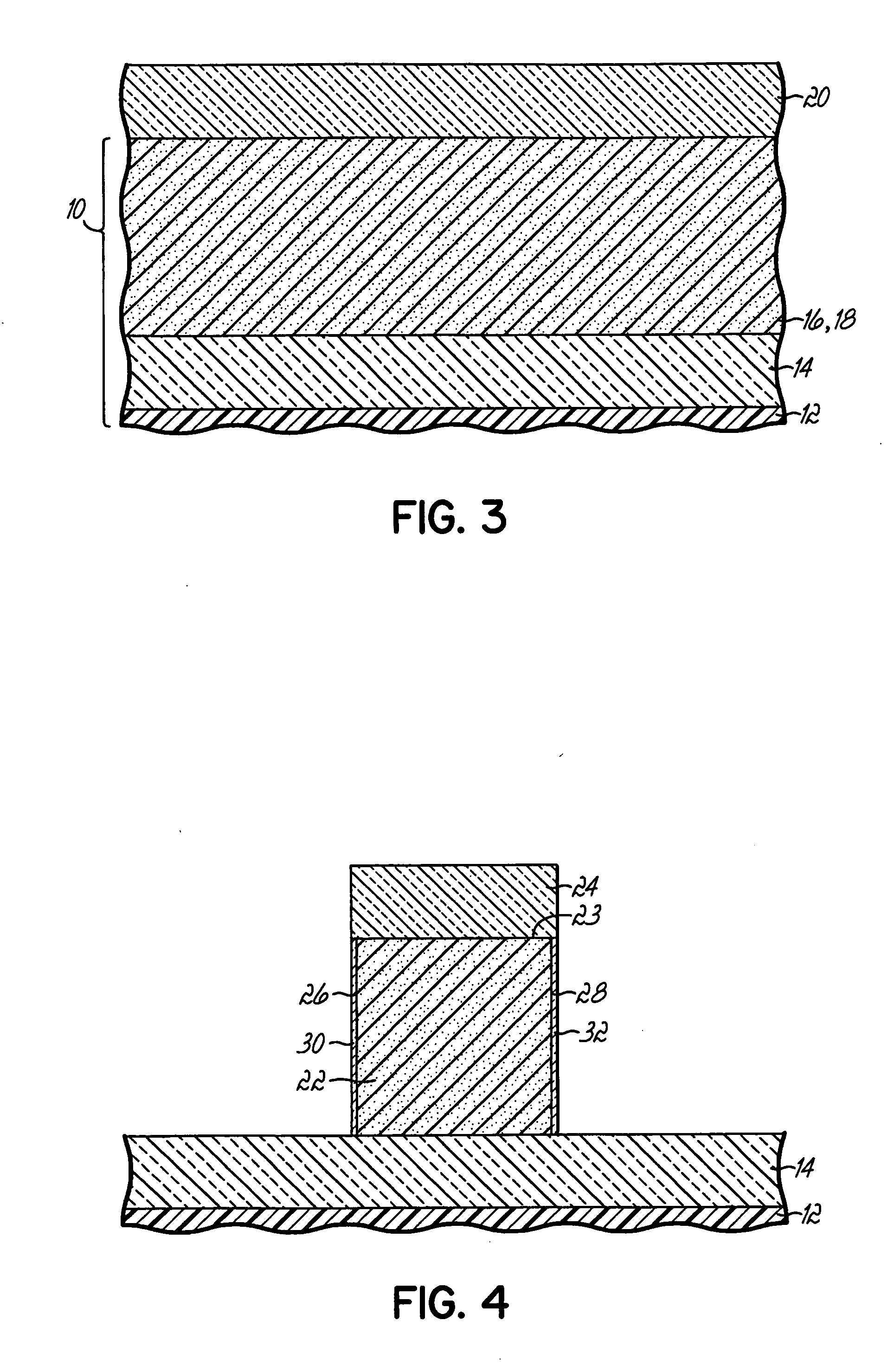Methods for fabricating a semiconductor structure using a mandrel and semiconductor structures formed thereby
a technology of semiconductor structure and mandrel, which is applied in the direction of semiconductor devices, basic electric elements, electrical equipment, etc., can solve the problems of reducing the reproducibility of device operation, reducing the likelihood of device overheating, and conventional subtractive etching techniques for forming the fin body of a finfet fail to precisely and accurately define the fin body shape. , to achieve the effect of reducing process control, uniform body width, and reducing the probability of device overh
- Summary
- Abstract
- Description
- Claims
- Application Information
AI Technical Summary
Benefits of technology
Problems solved by technology
Method used
Image
Examples
Embodiment Construction
[0017] The present invention provides methods of making a semiconductor structure consisting of a monocrystalline silicon body that may be used as a fin body in a fin-type field effect transistor (FinFET), as well as semiconductor structures made by the methods. The body, which may built by the present invention on a semiconductor-on-insulator (SOI) wafer or on a bulk substrate, is formed with significantly improved shape control in comparison with conventional subtractive etching methods of making such bodies. These substantially uniform width, narrow bodies of low-defect density monocrystalline silicon are ideal for use as fin bodies in fully-depleted FinFET device structures. The present invention will now be described in greater detail by referring to the drawings that accompany the present application.
[0018] With reference to FIGS. 1 and 2 and in accordance with an embodiment of the present invention, an SOI wafer 10 comprises a semiconductor substrate 12, a buried insulator l...
PUM
| Property | Measurement | Unit |
|---|---|---|
| thickness | aaaaa | aaaaa |
| thickness | aaaaa | aaaaa |
| current density | aaaaa | aaaaa |
Abstract
Description
Claims
Application Information
 Login to View More
Login to View More - R&D
- Intellectual Property
- Life Sciences
- Materials
- Tech Scout
- Unparalleled Data Quality
- Higher Quality Content
- 60% Fewer Hallucinations
Browse by: Latest US Patents, China's latest patents, Technical Efficacy Thesaurus, Application Domain, Technology Topic, Popular Technical Reports.
© 2025 PatSnap. All rights reserved.Legal|Privacy policy|Modern Slavery Act Transparency Statement|Sitemap|About US| Contact US: help@patsnap.com



